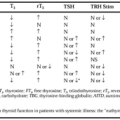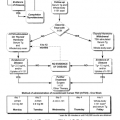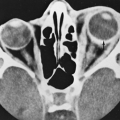IODIDE-INDUCED THYROTOXICOSIS
Part of “CHAPTER 37 – ADVERSE EFFECTS OF IODIDE“
The occurrence of hyperthyroidism after iodide administration has been reported throughout the world since this element was first used to treat endemic iodine-deficient goiter. The first case report of thyrotoxicosis after iodine supplementation was published in 1821. Iodide-induced hyperthyroidism subsequently has been referred to as the jodbasedow phenomenon. Thyrotoxicosis occurring after iodide supplementation for endemic goiter in iodine-deficient areas is frequently reported. The mechanism underlying this phenomenon may relate to the rapid iodination and proteolysis of previously iodine-poor thyroglobulin, or to the presence of a subpopulation of patients with goiters who have gross or microscopic autonomous areas of functioning tissue. The latter hypothesis is supported by the observation that hyperthyroidism may develop after an iodine load in euthyroid patients with solitary autonomous nodules.38 Four populations—in Holland, Tasmania, Yugoslavia, and Australia—were observed closely for the prevalence of thyrotoxicosis before and after iodide supplementation. The incidence of thyrotoxicosis after iodide supplementation ranged from .01% to .04%.14 The incidence of thyrotoxicosis in a population rises 6 months after long-term iodine exposure begins, peaks at 1 to 3 years, and returns to baseline by 6 to 10 years. Although several reports have indicated no increased incidence of thyrotoxicosis in some populations given iodine prophylactically, these follow-up studies may have been conducted too late to detect transient hyperthyroidism.
Reviews have addressed the prevention of iodine-induced thyrotoxicosis39 and its epidemiology in Europe and worldwide.40 Iodine-induced thyrotoxicosis has been reported from areas of endemic iodine deficiency in Germany after the use of iodine-containing drugs or contrast media, in much the same manner as was seen when iodine was added as a dietary supplement.41 The reported 5% to 30% incidence in this area of endemic goiter in Germany is much higher than that seen in iodine-sufficient areas. Follow-up studies on patients exposed to iodine-containing drugs or dyes indicate that serum iodothyronine concentrations increase rapidly in relation to iodine dose, with a doubling of free T4 index and a 53% increase in serum T3 at a time when urinary iodine excretion is increased 5-fold to 10-fold over baseline.42 Additional exposure to excess iodine intake further increased serum iodothyronine concentrations, albeit less dramatically.42 In addition, the incidence of T3 toxicosis relative to that of T4 toxicosis declined with increasing iodine intake.
Stay updated, free articles. Join our Telegram channel

Full access? Get Clinical Tree







